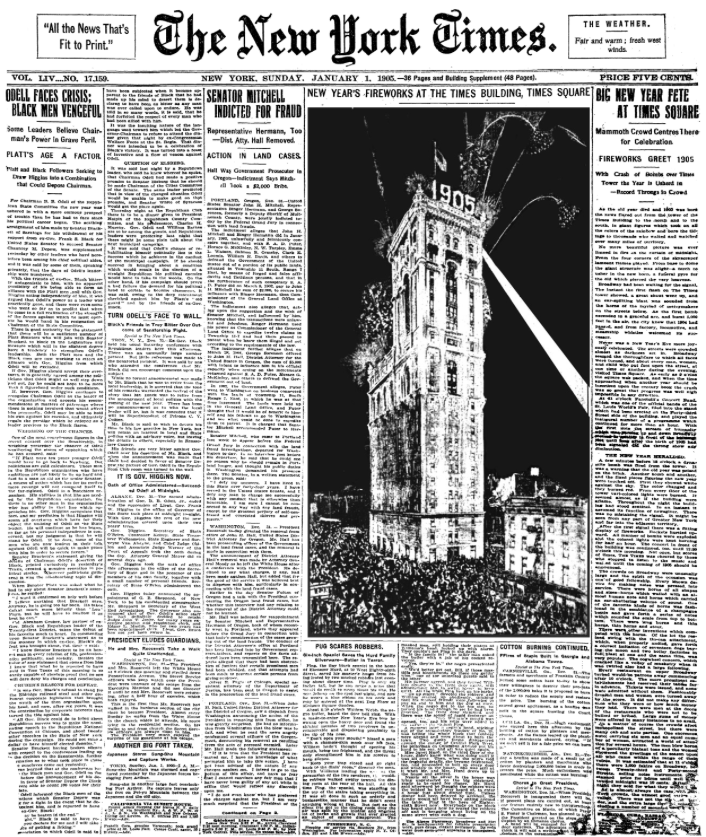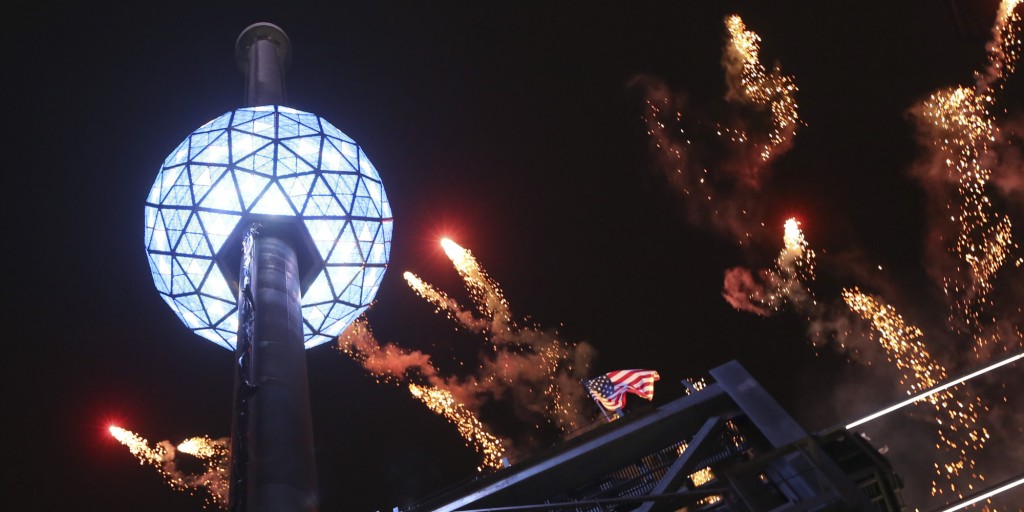Ringing in the New Year: A History of the Times Square Ball
Confetti flies through the air above One Times Square in New York City on New Year’s Eve, 2016. Photo courtesy of NBCNews.com
Every year, Americans mark the end the year and the holiday season with New Year’s Eve celebrations. The most famous celebration of all, of course, happens in New York City’s Times Square. Last year, over one million people gathered to watch the iconic New Year’s Eve Ball descend, and billions more watched the televised ceremony worldwide.[1] Today, most Americans cannot remember a New Year’s Eve celebration without the ball drop. So, when and how did this tradition begin?
Front page of the New York Times depicting the New Year’s celebration at One Times Square in 1905. Image courtesy of the Times Square Alliance.
The first time ball was invented in 1818 by the British Royal Navy, and was raised and lowered every day at noon so that all nearby ships could keep their on-board chronometers synchronized. By 1845, the time-keeping practice reached Washington D.C., and shortly after that, time balls began cropping up in cities nationwide.[2] It wasn’t until 1907, however, that the first time ball was used in a New Year’s Eve celebration. That year, Adolph Ochs, owner of the New York Times, was looking for an alternative way to celebrate the New Year after the city banned his usual midnight fireworks display. Ochs decided to have a 700 pound ball of wood, iron, and 100 incandescent lightbulbs installed on the flagpole at the top of One Times Square. [3] The ball lowering ceremony was a great success, and thus, a beloved American tradition was born.
Times Square on New Year’s Eve, 1935. Photo courtesy of Monovisions.com, copyrighted Bettmann/CORBIS
The New Year’s Eve Ball has gone through several replacements and renovations since its debut in 1907. The current New Year’s Eve Ball was redesigned for the millennium celebration in 2000. It is 12 feet in diameter and weighs 11,875 pounds. The geodesic aluminum frame is encrusted with 2,688 Waterford Crystals and is illuminated by 32,256 Philips LED lights that are capable of creating 16 million colors![4]
The current Times Square Ball on New Year’s Eve 2012. Photo courtesy of NYCNewYearsEve.com
.
By Kristen Semento, WPAMC Class of 2017
.
[1] “New Year’s Eve 2015 | Ball Drop at Times Square.” Times Square Alliance: New Year’s Eve 2015 | Ball Drop at Times Square. http://www.timessquarenyc.org/new-years-eve/index.aspx
[2] Latif Nasser, “A Ball of a Time: A History of the New Year’s Eve Ball Drop.” The New Yorker. July 16, 2014. http://www.newyorker.com/tech/elements/a-ball-of-a-time-a-history-of-the-new-years-eve-ball-drop
[3] “New Year’s Eve | History of New Year’s Eve.” Times Square Alliance: New Year’s Eve | History of New Year’s Eve. http://www.timessquarenyc.org/events/new-years-eve/history/index.aspx#.WGFreXeZNZo.
[4] “New Year’s Eve | History of the New Year’s Eve Ball.” Times Square Alliance: New Year’s Eve | History of the New Year’s Eve Ball. http://www.timessquarenyc.org/events/new-years-eve/about-the-new-years-eve-ball/history-of-the-new-years-eve-ball/index.aspx#.WGGlG3eZNZo.





Leave a Reply